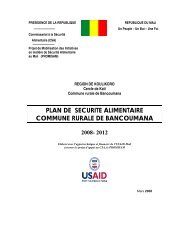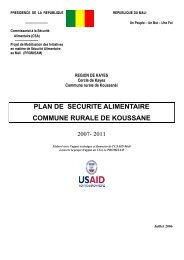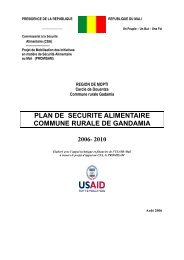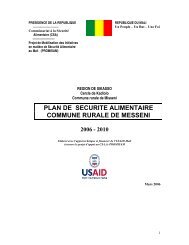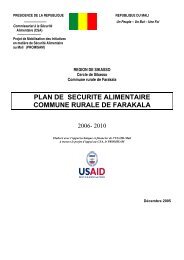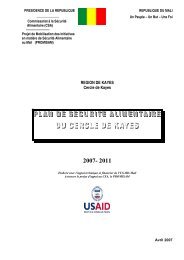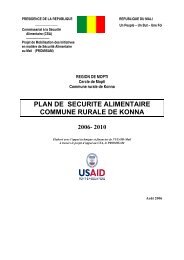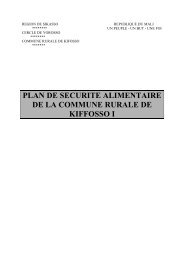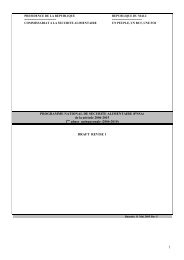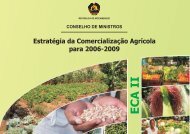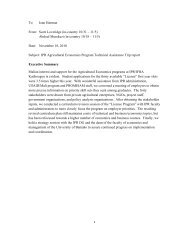STATA 11 for Windows SAMPLE SESSION - Food Security Group ...
STATA 11 for Windows SAMPLE SESSION - Food Security Group ...
STATA 11 for Windows SAMPLE SESSION - Food Security Group ...
You also want an ePaper? Increase the reach of your titles
YUMPU automatically turns print PDFs into web optimized ePapers that Google loves.
Stata <strong>11</strong> Sample Session Section 2 – Restructuring Data Files – Table Lookup & Aggregation<br />
Step 2: Generate a household<br />
level file containing the<br />
number of adult equivalents<br />
per household.<br />
5. Run the describe command again.<br />
The Stata commands are:<br />
describe<br />
label variable cprod_tt "Calories produced in staple<br />
foods"<br />
describe<br />
The new working data file now contains what we need,<br />
total number of calories from staple foods produced per<br />
household. We can also look at this variable by doing a<br />
descriptives. Use the “summarize” command to run a<br />
mean on the new variable cprod_tt. You should find<br />
that the average number of calories produced per<br />
household per year is 4,483,965.<br />
Save this data file using the Save As... command.<br />
1. Use Save As... from the File menu<br />
2. Name the file hh-file1<br />
3. Click on Save.<br />
4. Copy the command from the Results window<br />
and paste it into the do-file editor, delete the<br />
reference to the directory, and add a comment to<br />
explain what you have done.<br />
Remember to save your do-file regularly. You must be in<br />
the Do-file editor to save the do-file.<br />
The data needed to calculate adult equivalents per<br />
household is in the member file, C-Q1A.DTA.<br />
1. Click on the “Open Folder” button on the Stata<br />
Taskbar<br />
2. Select the file name c-q1a.dta and open the file.<br />
3. Copy the command and paste it into the do-file<br />
editor, delete the directory reference, and add a<br />
comment to explain what you have done.<br />
The adult equivalent value says that, on average, a female<br />
10 to 19 years old needs only 84% as many calories as a<br />
male 10 years or older, and that children under 10 need<br />
only 60% as many calories as the typical male 10 years<br />
and older. Thus, <strong>for</strong> example, a child (male or female)<br />
under age 10 is counted as .60 adult equivalents. For<br />
each person (observation) in the member file we need to<br />
look at the variables sex, ca4, and age, ca3, to calculate<br />
adult equivalents.<br />
The rules we will use <strong>for</strong> calculating adult equivalents <strong>for</strong><br />
66



